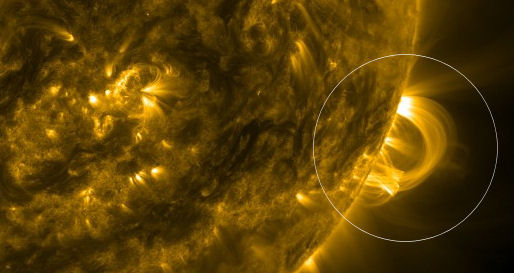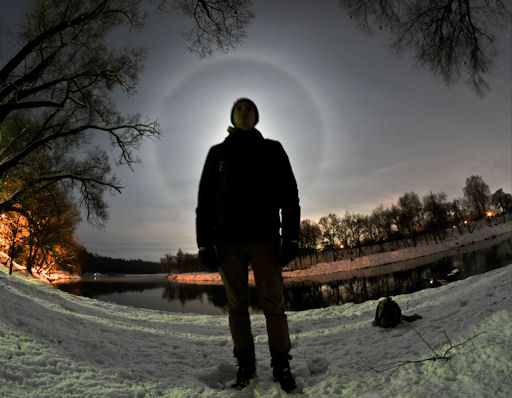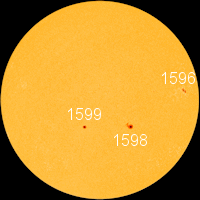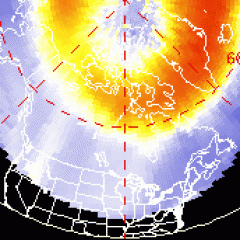HUNTER'S MOON: There' a full Moon coming on Monday, Oct. 29th, and according to folklore it has a special name: the Hunter's Moon. Some native American tribes gave it that name to mark the autumn hunts that topped off their food supplies for the coming winter. Think of that when the bright orb rises tomorrow, and enjoy the Hunter's moonlight.
SLOW ERUPTION: The magnetic canopy of a sunspot group just over the sun's southwestern limb slowly erupted on Oct. 28th. When the hours-long eruption was over, this bright arcade formed over the blast site, marking the location where the explosion occured:
Arcade loops appear after many solar flares. It is how the magnetic fields of sunspots settle down after a significant eruption. This particular eruption hurled a massive CME into space, but Earth was not in the line of fire. As the movie shows, the explosion was photogenic, but not geoeffective. Solar flare alerts: text, voice.
Realtime Space Weather Photo Gallery
BE ALERT FOR MOON HALOS: The Moon is waxing full and the northern hemisphere is experiencing the deepening chill of autumn. That means it's time to be alert for Moon halos. Martinsh Taube photographed this specimen last night in Valmiera, Latvia:
"We were on a late night walk through the city when we saw it," says Taube.
Moon halos are caused by ice in high clouds. Moonlight passing through six-sided crystals is bent into a luminous ring 22o in radius; the fuller the Moon, the brighter the halo. The Moon will be nearly full on Oct. 28th and completely full on Oct. 29th, so those are good nights to look. More specimens may be found in the gallery:

![]()
Solar wind
speed: 290.4 km/sec
density: 1.0 protons/cm3
explanation | more data
Updated: Today at 1517 UT
![]()
X-ray Solar Flares
6-hr max: B3 1056 UT Oct29
24-hr: B6 0302 UT Oct29
explanation | more data
Updated: Today at: 1500 UT
![]()
![]()
![]()
Daily Sun: 28 Oct 12
![]()
![]()
Decaying sunspot 1598 poses a slim threat for M-class solar flares. Credit: SDO/HMI
![]()
![]()
![]()
Sunspot number: 55
What is the sunspot number?
Updated 28 Oct 2012
Spotless Days
Current Stretch: 0 days
2012 total: 0 days (0%)
2011 total: 2 days (<1%)
2010 total: 51 days (14%)
2009 total: 260 days (71%)
Since 2004: 821 days
Typical Solar Min: 486 days
Update 28 Oct 2012
The Radio Sun
10.7 cm flux: 130 sfu
explanation | more data
Updated 28 Oct 2012
![]()
![]()
![]()
Current Auroral Oval:
![]()
Switch to: Europe, USA, New Zealand, Antarctica
Credit: NOAA/POES
![]()
![]()
![]()
Planetary K-index
Now: Kp= 0 quiet
24-hr max: Kp= 1 quiet
explanation | more data
![]()
Interplanetary Mag. Field
Btotal: 3.5 nT
Bz: 0.2 nT south
explanation | more data
Updated: Today at 1516 UT
![]()
![]()
![]()
Coronal Holes: 28 Oct 12
![]()
![]()
There are no large coronal holes on the Earthside of the sun. Credit: SDO/AIA.






